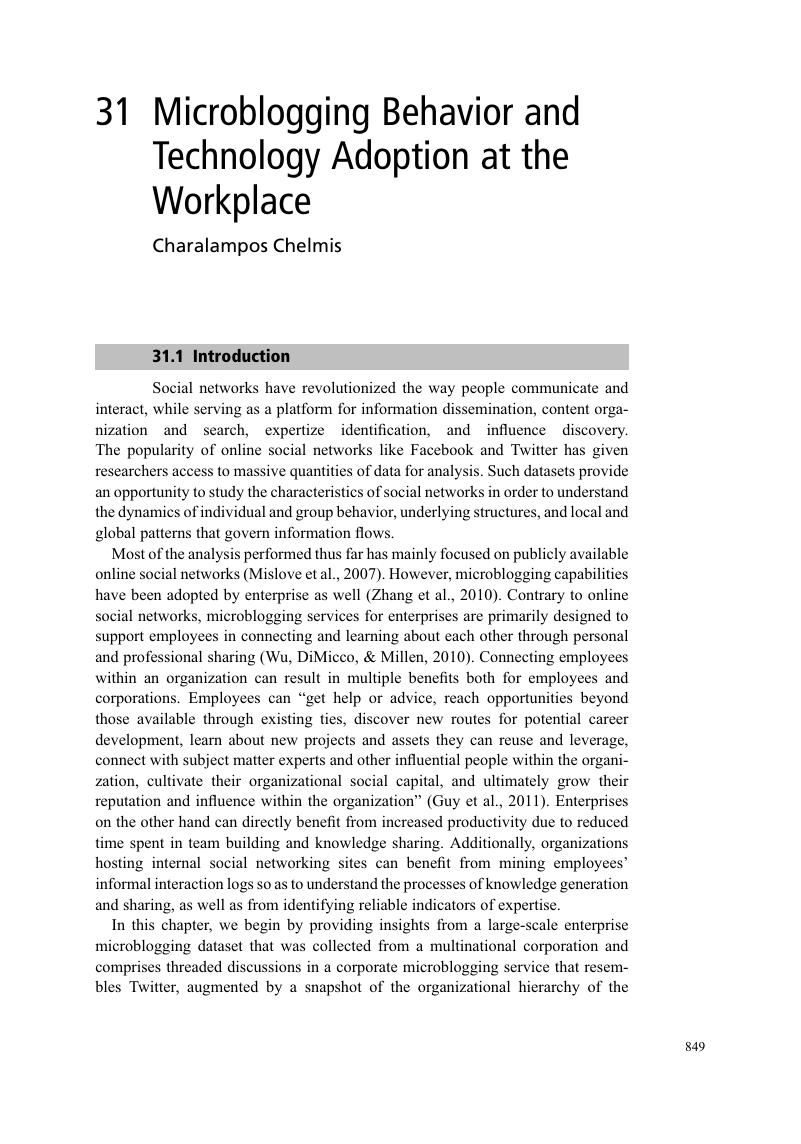Book contents
- The Cambridge Handbook of Technology and Employee Behavior
- The Cambridge Handbook of Technology and Employee Behavior
- Copyright page
- Dedication
- Contents
- Notes on Contributors
- Preface
- Acknowledgments
- Part I Technology in I-O Psychology
- Part II Technology in Staffing
- Part III Technology in Training and Development
- Part IV Technology in Leadership and Teams
- Part V Technology in Motivation and Performance
- Part VI Technology in Statistics and Research Methods
- Part VII Interdisciplinary Perspectives on Employees and Technology
- 31 Microblogging Behavior and Technology Adoption at the Workplace
- 32 Advantages and Unintended Consequences of Using Electronic Human Resource Management (eHRM) Processes
- 33 Technology and Social Evaluation: Implications for Individuals and Organizations
- Index
- References
31 - Microblogging Behavior and Technology Adoption at the Workplace
from Part VII - Interdisciplinary Perspectives on Employees and Technology
Published online by Cambridge University Press: 18 February 2019
- The Cambridge Handbook of Technology and Employee Behavior
- The Cambridge Handbook of Technology and Employee Behavior
- Copyright page
- Dedication
- Contents
- Notes on Contributors
- Preface
- Acknowledgments
- Part I Technology in I-O Psychology
- Part II Technology in Staffing
- Part III Technology in Training and Development
- Part IV Technology in Leadership and Teams
- Part V Technology in Motivation and Performance
- Part VI Technology in Statistics and Research Methods
- Part VII Interdisciplinary Perspectives on Employees and Technology
- 31 Microblogging Behavior and Technology Adoption at the Workplace
- 32 Advantages and Unintended Consequences of Using Electronic Human Resource Management (eHRM) Processes
- 33 Technology and Social Evaluation: Implications for Individuals and Organizations
- Index
- References
Summary

- Type
- Chapter
- Information
- The Cambridge Handbook of Technology and Employee Behavior , pp. 849 - 878Publisher: Cambridge University PressPrint publication year: 2019



